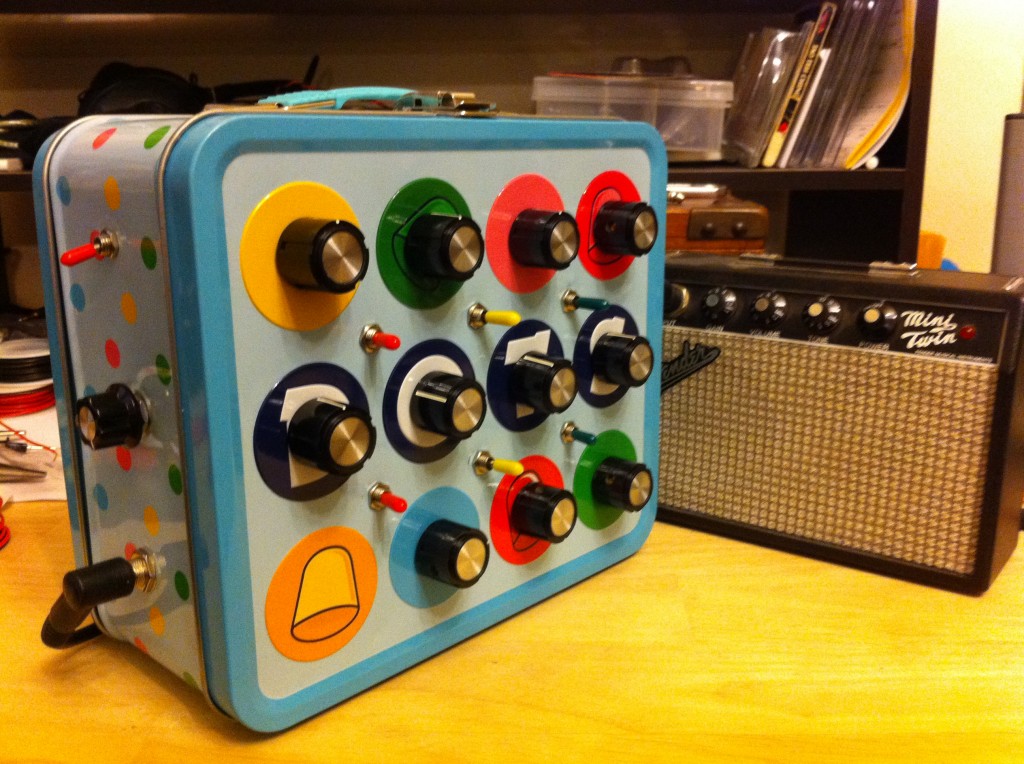
•
I’ve started studying electronics. Â Up until this point, I’ve been simply wiring together LEDs, buzzers, motors, and mucking about with programming the Basic STAMP microprocessor to hook up to my Max/MSP patches. Â Ray Wilson’s Weird Sound Generator is my first foray into putting together something more complex. Â It’s quite a nice kit for beginners and at the end of the process, one has a useful little noise maker in their arsenal of electronic instruments.
Since I found the documentation of building one at Matt Stanfield’s blog, the sync24 blog, and the image at Make very helpful when embarking on my own, I thought I’d pay it forward by posting images from my own adventure in circuitry in case it might help other people interested in making one.  I know that the hardest part for me was just starting the process as I was worried about making a mistake and blowing the $90 for the kit.  Sort of like staring at a blank canvas and daring to make the first brush stroke.  Seeing detailed images at the above links really facilitated the build for me.
•
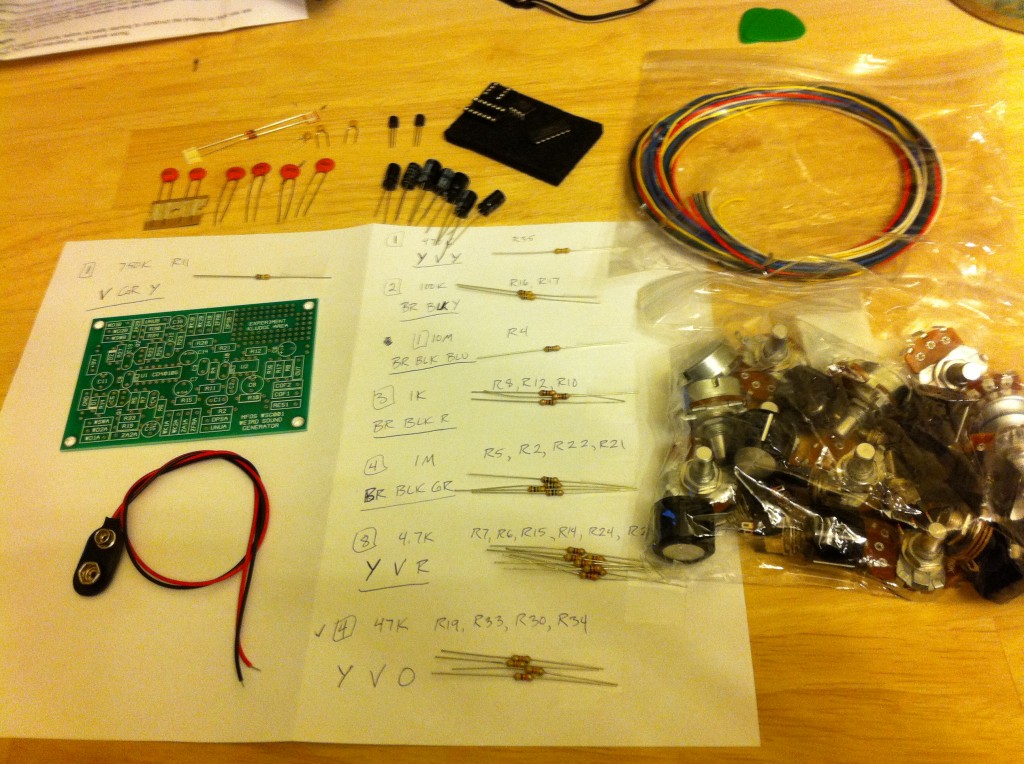
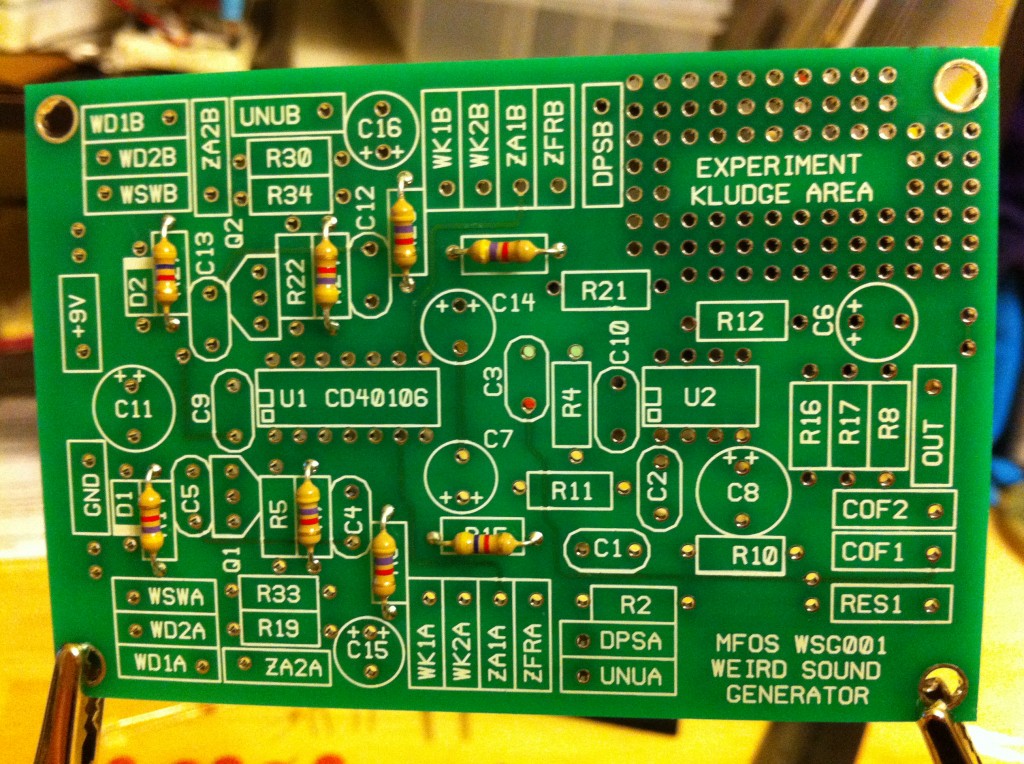
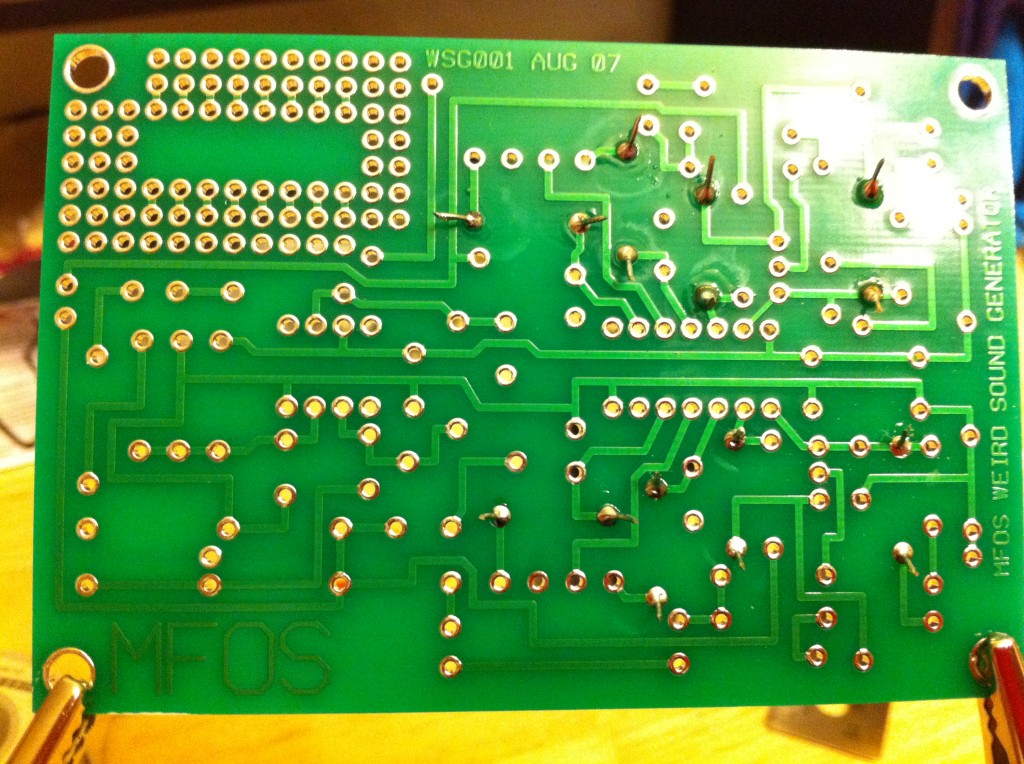
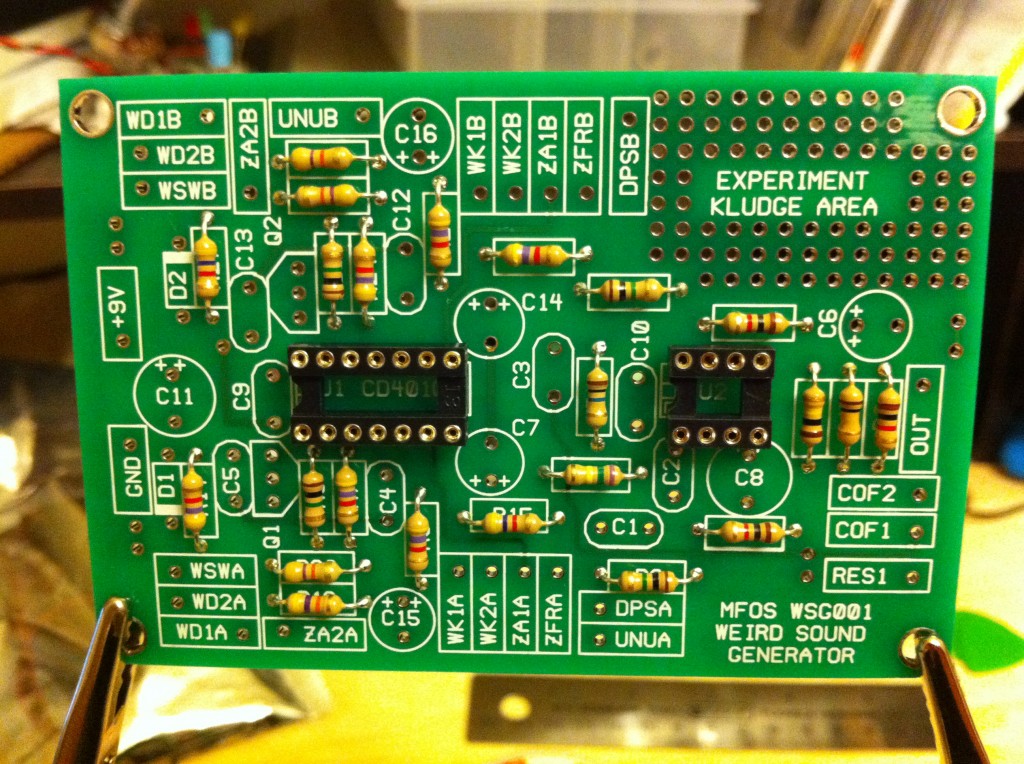
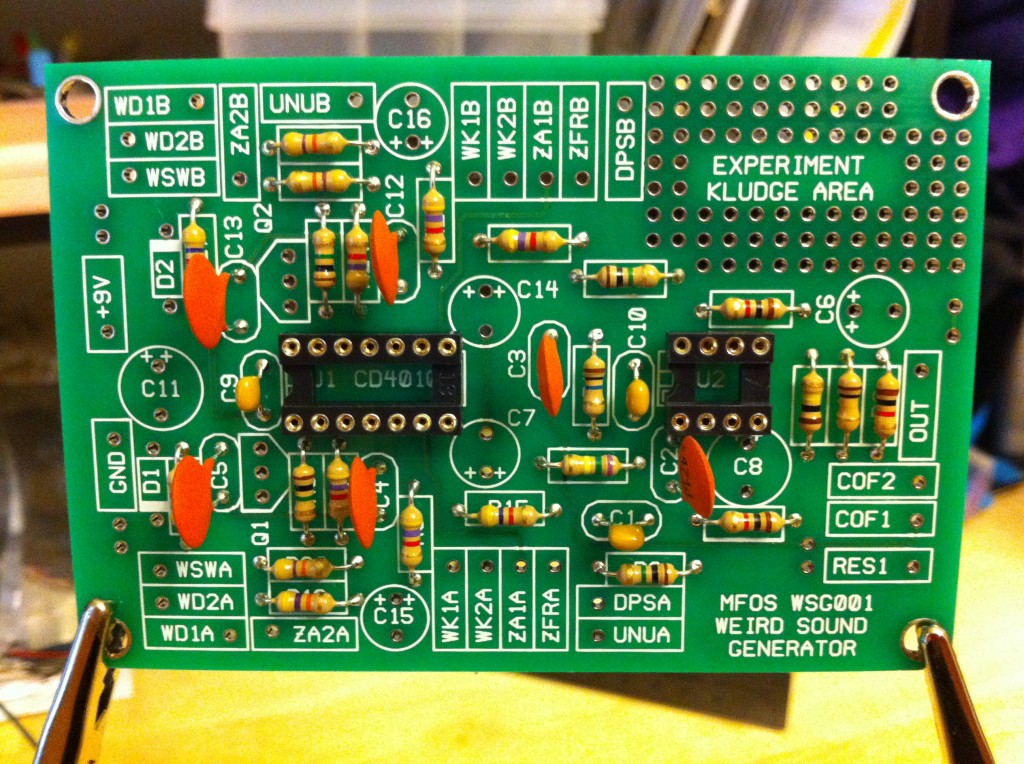
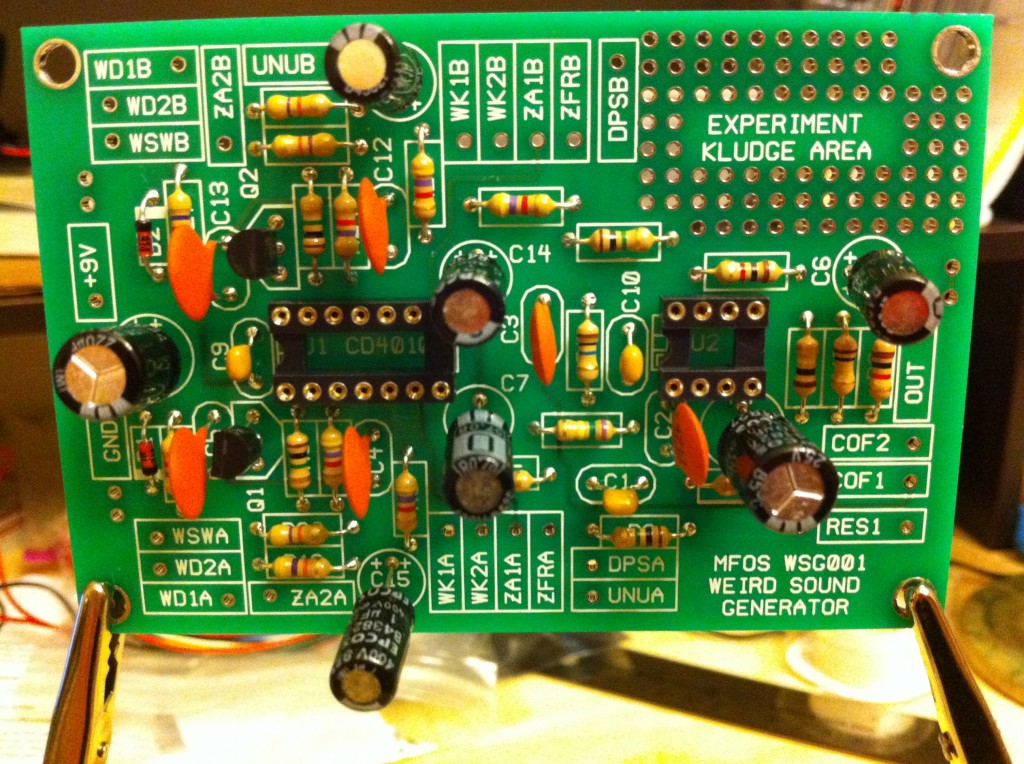
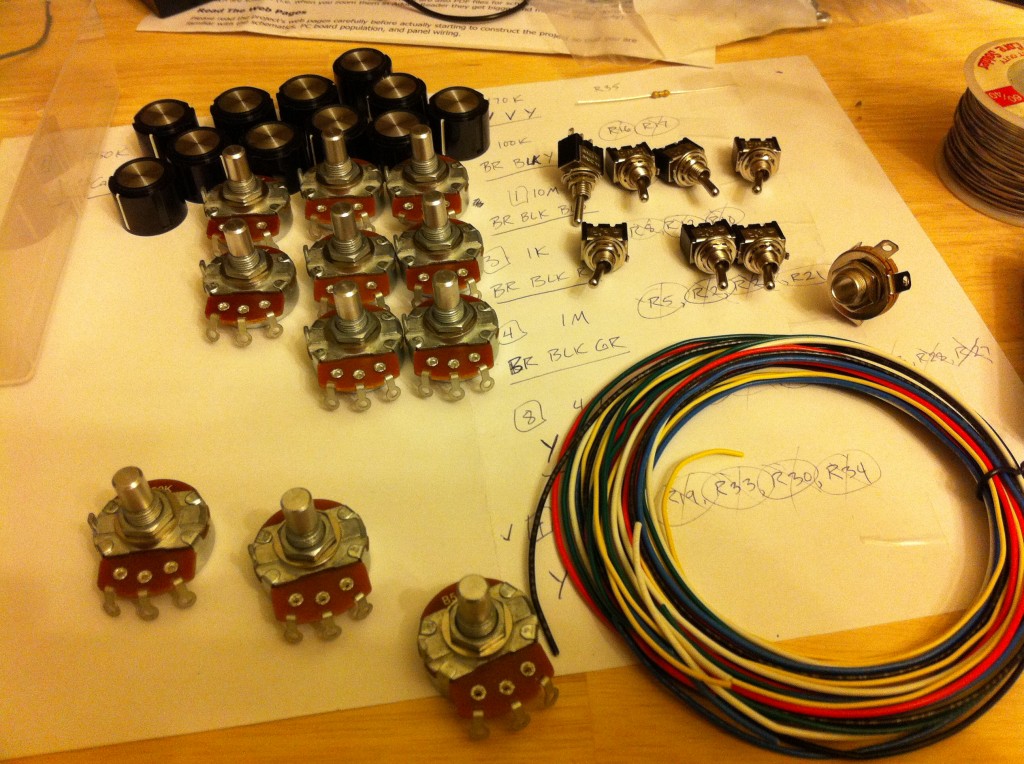
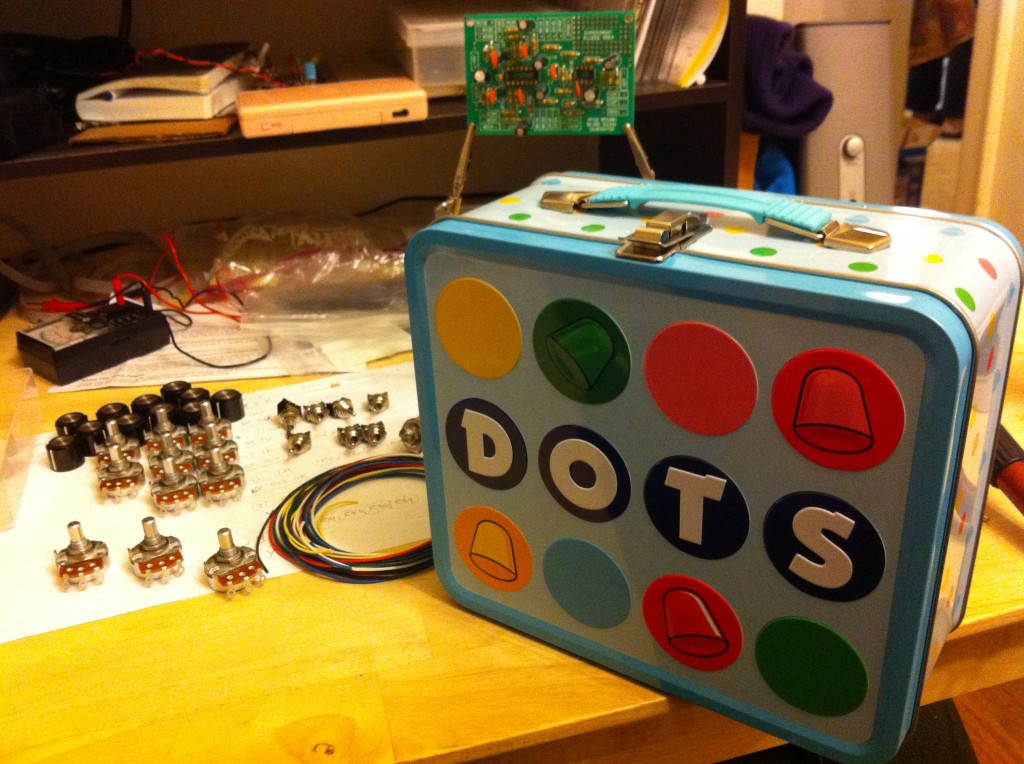
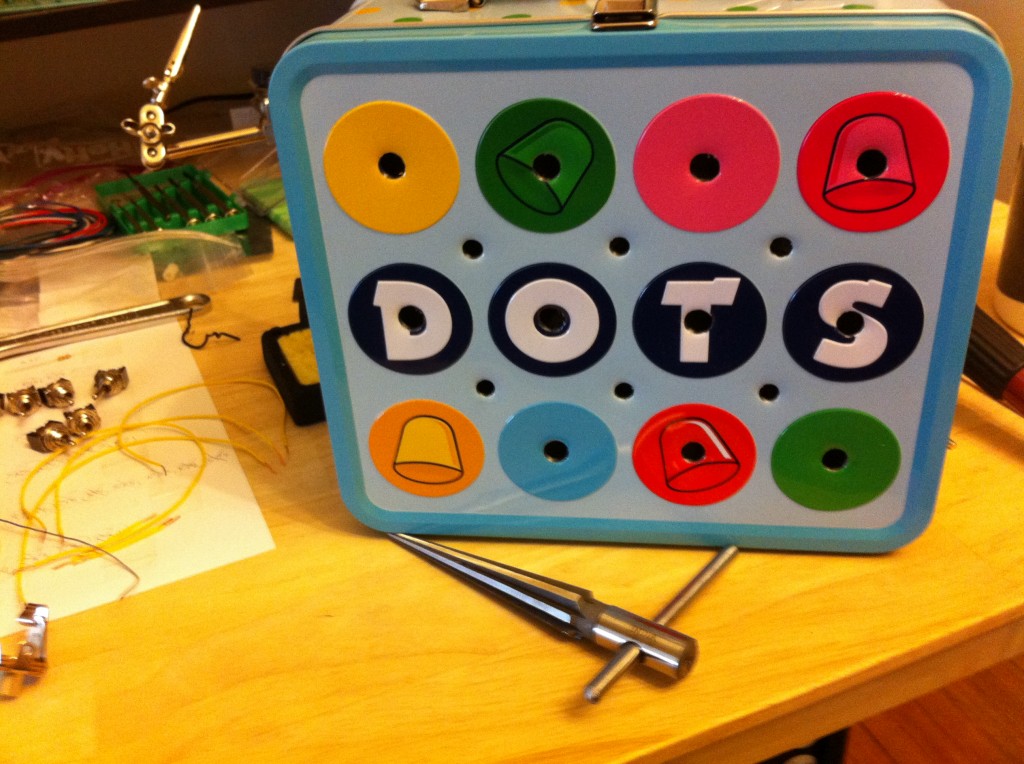
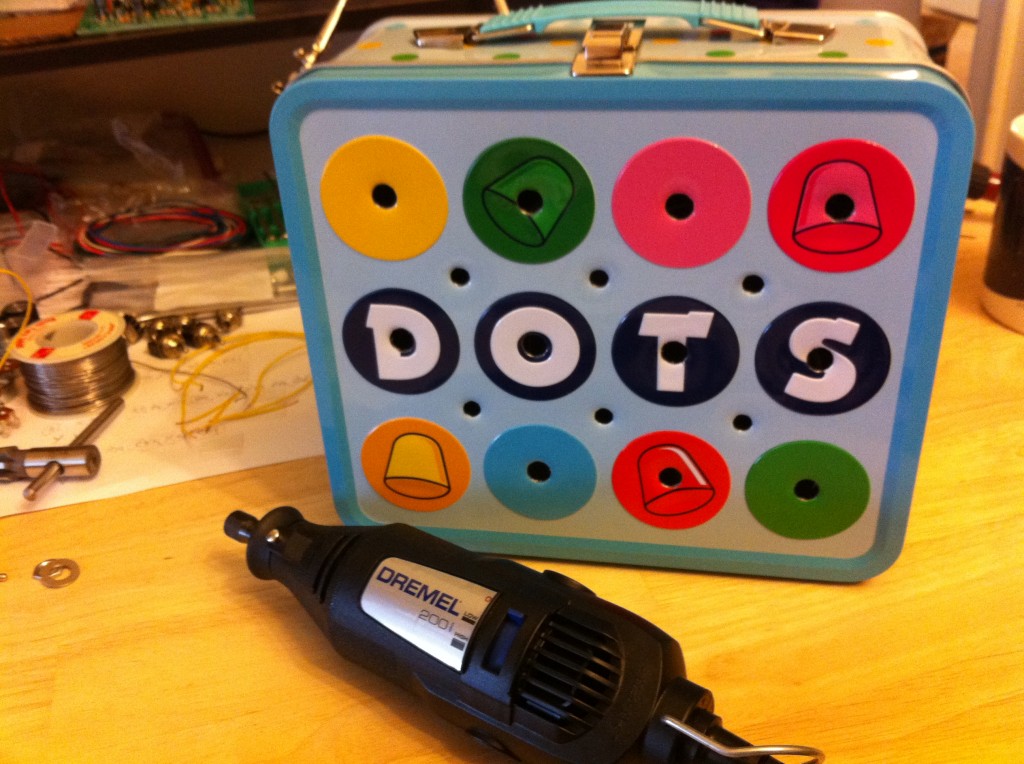
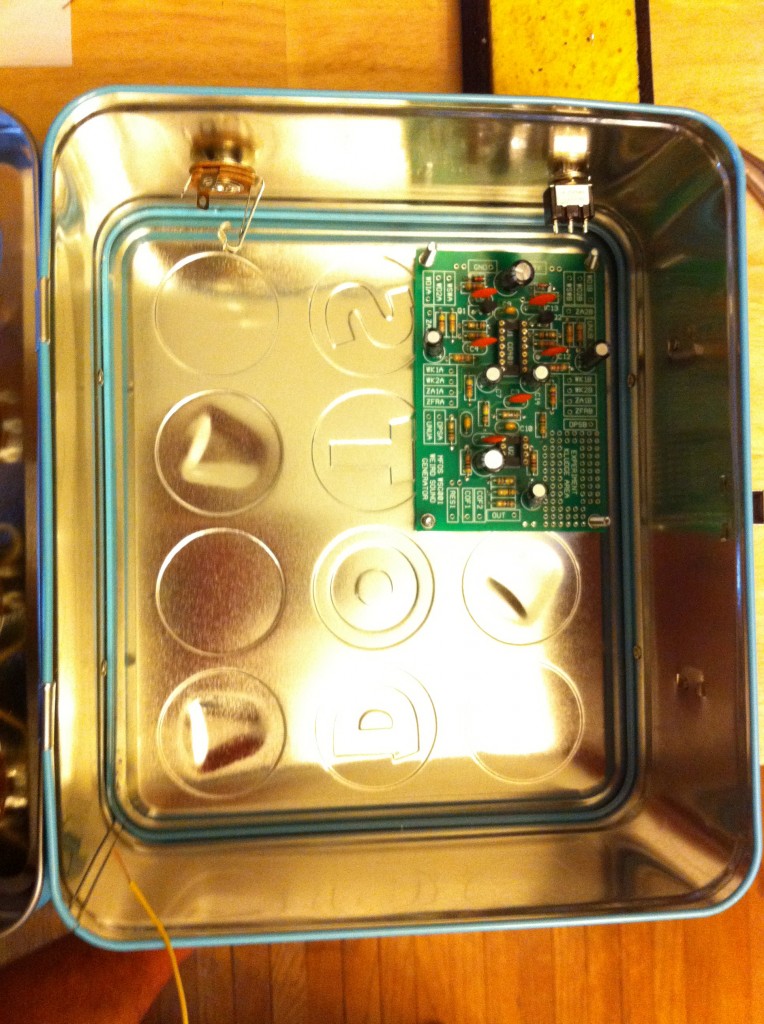

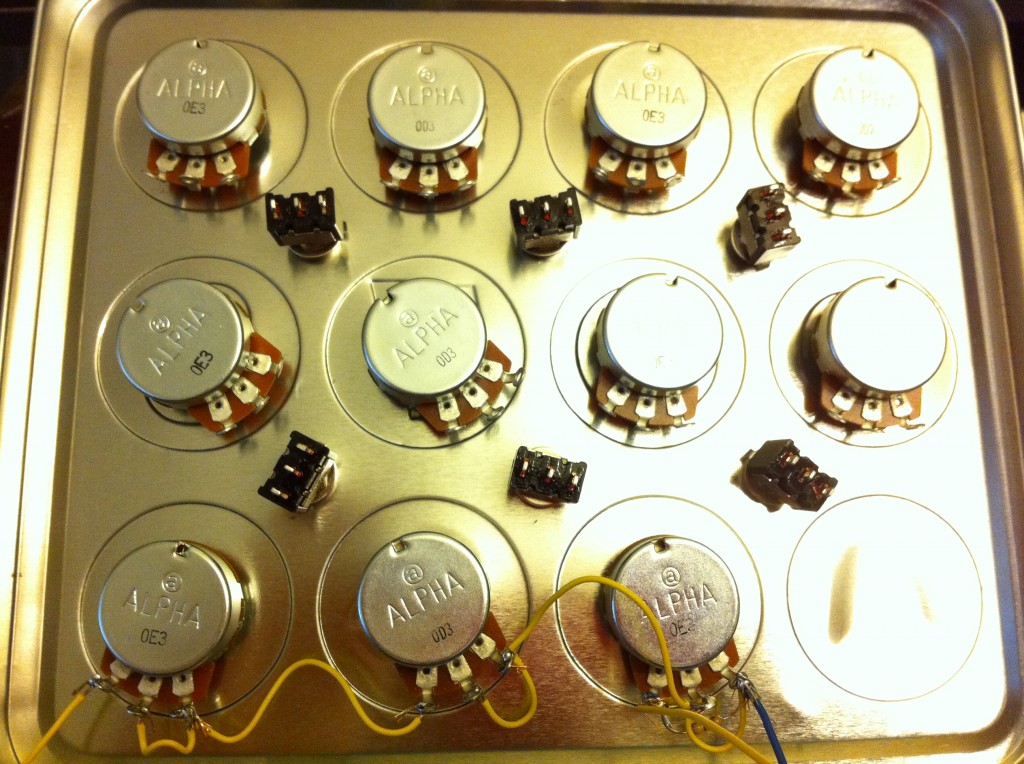
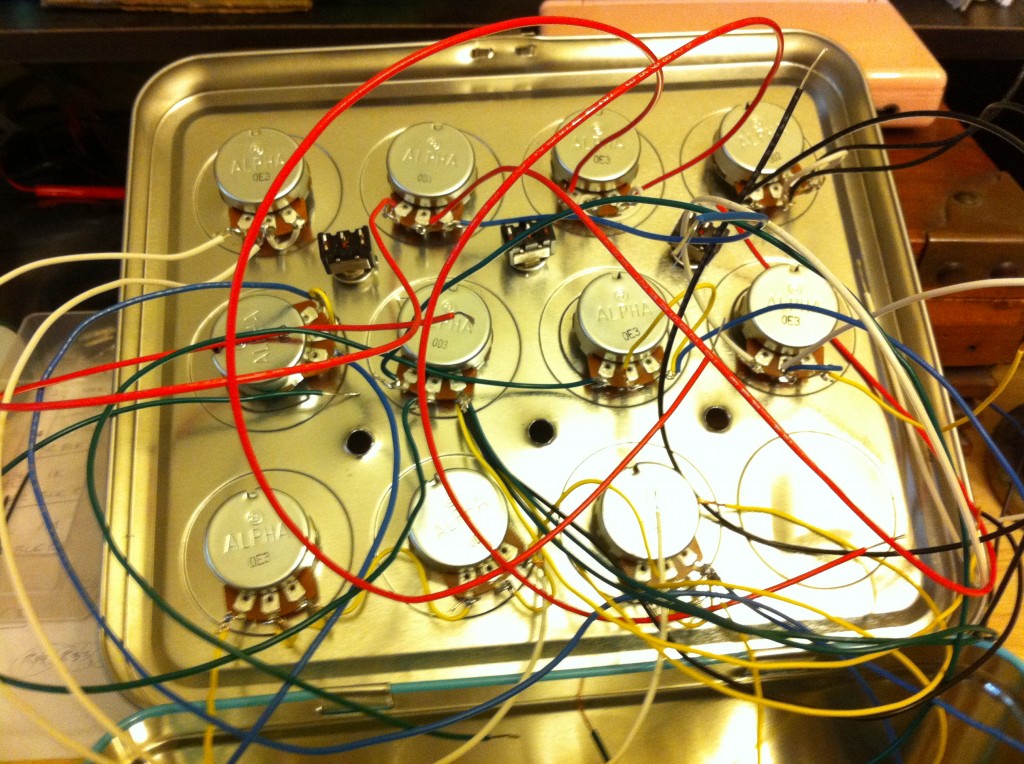
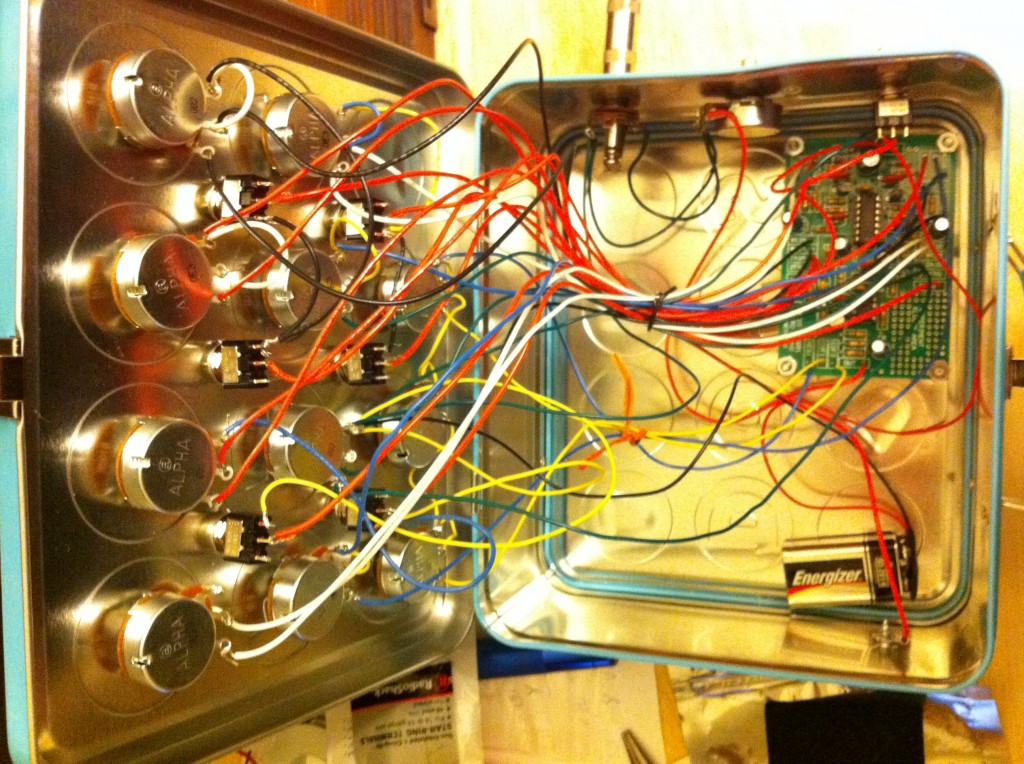
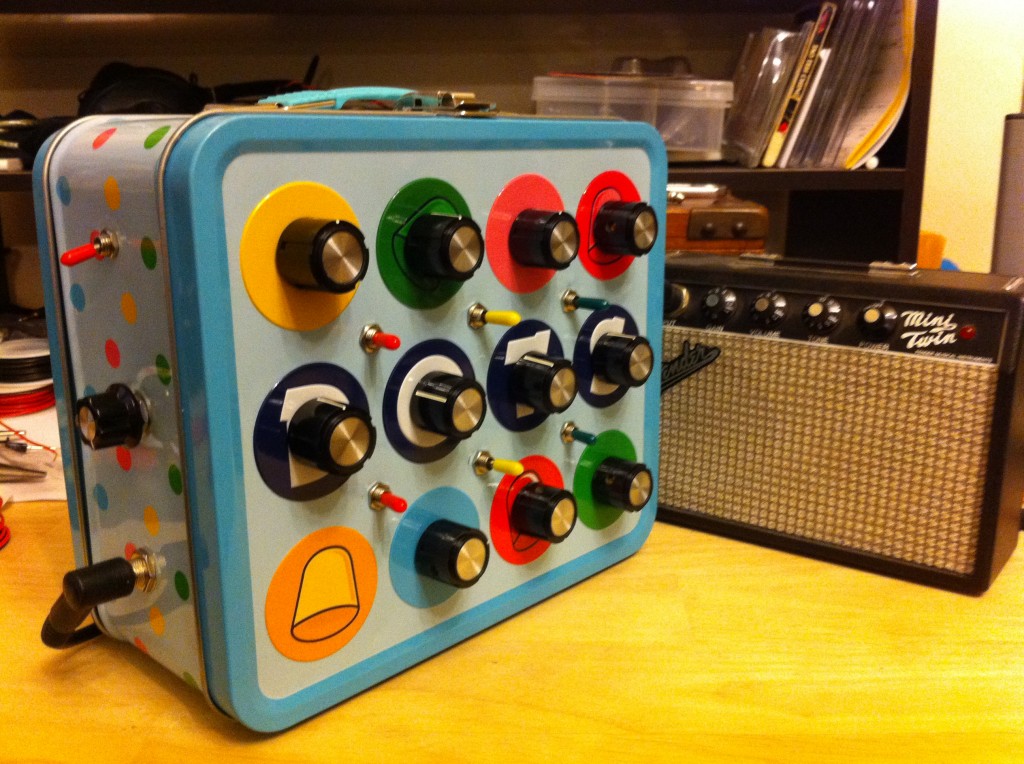
•
There were a couple of glitches that cropped up once I had finished. Â There seems to be some crosstalk from the filter and one of the oscillators resulting in an unintended clicking that goes away when I open the housing. Â I’ve tried to shield the wires and resolder them so they were further away from one another, but it’s still present. Â Also, the volume control mod only seems to reduce the volume on part of the sound. Â Still, I was worried the project wouldn’t make any sound at all, so the fact that I have this cute lunchbox to make noise with is a success to me.
•
You can check out a couple of mp3s of what it sounds like below …
wsg02.mp3 : Â This example was recorded with the housing open, eliminating the clicking and restoring some volume functionality.
wsg01.mp3 : Â Here, the housing is closed, bringing back the clicking. Â If anyone has any suggestions on reducing it, I’d love to hear ideas.
•
I highly encourage anyone interested in going down the hardware DIY path to check out Ray’s kit. Â It’s quite fun and can be finished in a weekend.
•
Comments are closed.